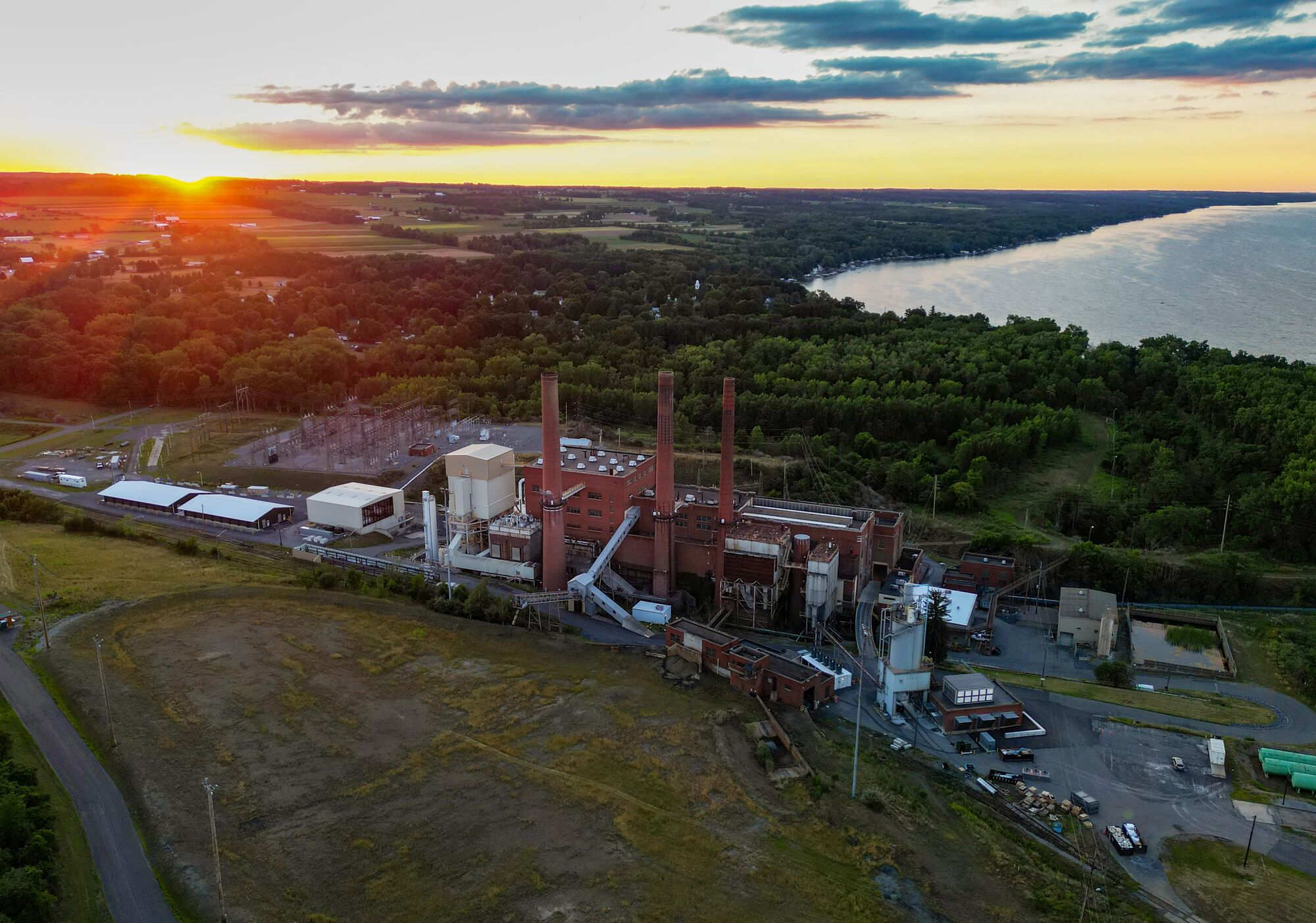The Impacts of Cryptomining
September 23, 2022
The Environmental Impacts of Cryptomining
Presented by Earthjustice’s Clean Energy Program
in partnership with Sierra Club’s Environmental Law Program
The guidebook — "The Energy Bomb: How Proof-of-Work Cryptocurrency Mining Worsens the Climate Crisis and Harms Communities Now" — is the first to comprehensively document the explosive growth of cryptocurrency mining in the United States and examine how this industry is impacting utilities, energy systems, emissions, communities and ratepayers.
On this Page
Cryptocurrency mining is an extremely energy-intensive process that threatens the ability of governments across the globe to reduce our dependence on climate-warming fossil fuels.
If we do not take action to limit this growing industry now, we will not meet the goals set forth by the Paris Agreement and the Intergovernmental Panel on Climate Change to limit warning to 2°C.
The guidebook “The Energy Bomb” discusses several such examples where fossil-fueled cryptocurrency mining has increased local air, water, and noise pollution, increased costs on others, and increased climate pollution at a time when we should be doing everything in our power to move in the opposition direction to mitigate the worst impacts of the climate crisis.
Cryptocurrency Mining’s Explosive Growth in the United States
After cryptocurrency mining was banned in China in 2021, the amount of mining operations exploded in the United States.
In the year prior to July 2022, Bitcoin consumed an estimated 36 billion kilowatt-hours (kWh) of electricity, as much as all of the electricity consumed in Maine, New Hampshire, Vermont, and Rhode Island put together in that same time period.
The past two years have demonstrated that the industry preferentially seeks readily-available energy and minimal regulation, re-starting defunct coal and gas plants, flooding the restructured electricity market in Texas, and tapping into power grids where regulators have little oversight.
This explosive growth strains energy grids, raises retail electricity rates, and increases total carbon emissions and local air pollution.
The design of proof-of-work cryptocurrency mining incentivizes miners to ramp up operations as quickly as possible, often irrespective of the source of energy.
Indeed, big mining operations have shown a willingness to invest in otherwise uneconomic power sources, like defunct coal plants or low-capacity gas plants, as long as that electricity can be made available quickly. Unlike other large electricity users, cryptocurrency mining operations have a short time horizon, and most have shown little interest in investing in new clean energy.
What is Cryptocurrency Mining, and How Does It Work?
Proof-of-work cryptocurrency mining is designed to consume enormous quantities of energy. The process effectively entails millions of computing machines racing to solve a complex, but meaningless, problem.
- In Bitcoin’s algorithm, for example, the computer or mining machine that successfully solves the problem is rewarded with Bitcoin (and functionally verifies the blockchain).
- As long as the reward is high enough (i.e., the price of Bitcoin is high enough), miners will attempt to use more — and faster — mining machines to increase their chances of winning that reward.
- As more mining machines enter the race, the difficulty of the computational problem gets harder, and the electricity required to win increases.
Over time, the electricity used by miners in these races increases exponentially.
Proof-of-Work Cryptocurrency Mining Increases Emissions in the United States
Top-down estimates of the electricity consumption of cryptocurrency mining in the United States imply that the industry was responsible for an excess 27.4 million tons of carbon dioxide (CO2) between mid-2021 and 2022 — or three times as much as emitted by the largest coal plant in the U.S. in 2021.
But these estimates are simply based on the likely energy consumption to solve cryptocurrency’s puzzles.
A ground-up approach, looking at how the industry has actually been deployed, suggests that proof-of-work cryptocurrency might be yet more impactful.
Cryptocurrency miners procure their electricity in four different ways:
- Outright purchase of power plants that supply mining rigs “behind-the-meter;”
- Power purchase agreements with power generators or utilities;
- Electricity purchases from a local utility; and
- By burning gas at oil and gas wells. Each type of mining produces excess emissions, and impacts electricity and energy consumers.

The Industry Keeps Greenwashing Its Poor Practices
The proof-of-work cryptocurrency mining community is well aware that its extraordinary energy consumption — and fossil fuel habit — is unattractive when much of the rest of the economy strives to rapidly decarbonize.
In the last year, the industry and its trade organizations have rolled out a series of sustainability claims that are anywhere from outright fiction and greenwashing to no more than hopeful theories, undermined by actual practices.
- Most mining facilities draw power from the grid — meaning their electricity is generated by whatever existing energy is in place in the region, or is contracted by their utility.
- Adding a new large-scale load, like a cryptocurrency mining facility, to the grid generally requires existing fossil generators to increase their output.
- Mining facilities located near wind or solar sites do not have a special claim to energy produced by that energy, but instead drive increased emissions from gas and coal plants.
- There are few mining facilities are actually building new renewable energy to power their operations.
Today, the cryptocurrency mining industry already uses half the electricity of the entire global banking sector (while holding a miniscule fraction of the value), and continues to increase.
In the United States, the industry has shown little indication of slowing its growth when prices are high.
Miners have demonstrated, consistently, from their initial rush to China where coal is a predominant source of electricity to the recent deal between AboutBit and a soon-to-be-retired coal plant in Indiana, that proof-of-work cryptocurrency mining prioritizes the short-term need for large amounts of electricity over longer-term investments in renewable energy.
And unlike other industries where self-imposed, or regulation-based, community standards could result in more sustainable practices, proof-of-work mining is an inherent arms race towards increased energy consumption, until prices no longer support growth.
Regulators and Policymakers Can Take Steps to Reduce the Harm of Cryptocurrency Mining
State, local, and federal policymakers and regulators can help ensure cryptocurrency mining does not undermine climate or health goals, or adversely impact ratepayers.
The massive energy consumption of cryptocurrency mining threatens to undermine decades of progress towards achieving climate goals, and threatens grids, utilities, communities, and ratepayers.
Some jurisdictions have, or are considering, simply banning the practice of mining proof-of-work cryptocurrencies.
Shy of a complete moratorium, there are actions that can be taken by state, local, and federal officials to protect energy systems, communities, and ratepayers.
- Local and state officials can enforce pollution and noise ordinances, ensure that they are not extending economic development dollars on false promises of long-term jobs or revenue, develop careful zoning codes, and — in the cases where municipalities run the electric utility — develop tariffs that protect existing ratepayers.
- Utility regulators can influence or bar problematic power purchase agreements, create protective electricity rates or system benefits charges that ensure speculative mining operations do not leave a trail of stranded assets, critically assess utility plans for energy procurement for cryptocurrency mining facilities, and ensure that mining facilities do not increase electricity or capacity costs for existing customers.
- Utilities can develop electricity rates that protect against stranded assets, ensure that they do not need to expand power capacity to meet cryptocurrency mining load, and charge rates sufficient to fully protect existing ratepayers from the increased marginal cost of production.
- Grid operators can develop comprehensive guidance and rules around the interconnection of high-density loads, study the impact of cryptocurrency mining on congestion, resource adequacy, and wholesale market prices, and create rules that minimize the impact of cryptocurrency mining on other customers.
- Environmental regulators at all levels should consider affirmative regulation to minimize the local health and environment impacts cryptocurrency mining places on local communities.
The Guidebook
The Energy Bomb: How Proof-of-Work Cryptocurrency Mining Worsens the Climate Crisis and Harms Communities
I. Cryptocurrency Mining’s Explosive Growth in the United States
II. Proof-of-Work Cryptocurrency: A Brief Introduction
III. No Longer a Hobbyist’s Experiment: How Cryptocurrency Mining Transformed Into Massive, Centralized Operations to Maximize Profits
- Proof-of-Work Cryptocurrency Mining Incentivizes Mining As Quickly As Possible to Maximize Profits
- Cryptocurrency Miners Often Value Speed Of Access to Energy Over Price, Even to the Point of Reviving Dying Fossil-Fueled Power Plants
IV. The Scale and Source of Bitcoin Energy Usage is Largely Invisible to Regulators
V. Where Do The Electrons Come From?
- Types of Electricity Procurement By Cryptocurrency Miners
VI. The Climate and Energy Impacts of Cryptocurrency Mining in the United States are Substantial
VII. Cryptocurrency Mining Harms Communities and Electricity Ratepayers
- Most Environmental Impacts from Cryptocurrency Mining Are Borne By Local Communities
- Impacts on Electricity Prices for Local Residents and Businesses
VIII: Breaking Through the Bitcoin Myths
IX. Recommendations to Mitigate the Risks of Proof-of-Work Cryptocurrency Mining
Authors
- Mandy DeRoche, Deputy Managing Attorney, Clean Energy Program, Earthjustice
- Jeremy Fisher, Senior Advisor for Strategic Research and Development, Environmental Law Program, Sierra Club
- Nick Thorpe, Senior Policy Associate, Climate & Energy, Earthjustice
- Megan Wachspress, Staff Attorney, Sierra Club Environmental Law Program
The massive energy consumption of proof-of-work cryptocurrency mining threatens to undermine decades of progress towards achieving climate goals, and threatens grids, utilities, communities, and ratepayers. Regulators and policymakers must take steps to reduce the harms of cryptocurrency mining. Learn more on cryptocurrency.
Earthjustice’s Clean Energy Program uses the power of the law and the strength of partnership to accelerate the transition to 100% clean energy.
